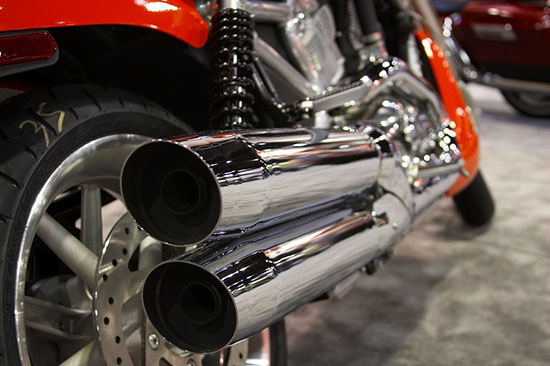Ever wondered what happens to motorcycles that don’t sell? You’re not alone. It’s a question that baffles many bike enthusiasts.
In this article, we’ll talk about the lifecycle of unsold motorcycles, learn how dealers manage excess stock, grasp the intricacies of bike auctions, and understand how these processes can affect motorcycle prices.
To give a quick answer to this question, unsold motorcycles at dealerships can have various outcomes depending on the specific business strategies of the retailers.
- Price Cut: If motorcycles aren’t selling at the original price, the dealership may choose to cut down the price to attract buyers.
- Auction: If the dealership can’t sell it even after price cuts and it’s taking too much space on the showroom floor, they might auction the bike.
- Sold to Wholesalers: Some motorcycles are sold to wholesalers who then sell them off to other retailers or directly to the customers.
- Used for Demonstrations: Dealerships might use unsold motorcycles for test drives, demonstrations, or even rentals.
- Sold Online: There are online platforms where dealerships can sell their unsold inventory directly to customers or other businesses.
- Manufacturer Buyback: In some cases, the manufacturer may buy back the unsold motorcycles to re-distribute them to other sellers or to sell them in different markets.
In some cases, they might remain at the dealership for a longer period of time and eventually become older models, but still brand-new.
They would then be sold at a discount. This is why sometimes you may find brand-new motorcycles from a couple of years ago still up for sale
Contents
The Lifecycle of Unsold Motorcycles
Initially, the bike’s produced in a factory, where it’s assembled from thousands of individual parts.
Then, it’s shipped to a dealership. If it doesn’t sell in its first year, the dealer may offer discounts to entice buyers.
After two years, the bike’s considered old stock. It’s then sold at a significantly reduced price or returned to the manufacturer.
If returned, it’s disassembled and its parts are used in the production of new models. The metal components are often melted down and recycled.
Understanding this lifecycle not only reveals the fate of unsold motorcycles, but also underscores the importance of efficient production and sales strategies in the motorcycle industry.
How Dealers Manage Excess Stock
As a dealer, you’re often faced with excess stock, and managing it effectively can be a real challenge. Unsold motorcycles don’t just take up valuable floor space; they’re tied-up assets that could’ve been invested elsewhere. Precision inventory control is crucial here.
First, you’ve got to understand your market trends. What’s selling? What’s not? Use this data to adjust your purchasing behavior.
Second, consider implementing a robust sales strategy for slow-moving units. That might include discounts, trade-in options, or even bundling extras with a purchase. You could also negotiate with the manufacturer to return or exchange the bikes.
Lastly, consider investing in an advanced inventory management system. It’ll help you keep track of your stock levels, sales trends, and provide actionable insights.
The Process of Motorcycle Auctions
When you participate in a motorcycle auction, you’ll first encounter the auction procedures, which may vary depending on the auction house.
You’ll often have the chance to inspect the bikes before bidding, familiarizing yourself with their condition and value.
Once bidding commences, you’ll compete with other potential buyers, making strategic decisions based on your knowledge of the motorcycle’s worth and your budget.
Auction Procedures
Before you can bid, it’s essential that you understand how the auction procedures work. At first, it might seem complex, but it becomes simpler once you get the hang of it. Here’s a brief rundown:
- Register: You’ll need to register before the auction begins. This usually involves providing some form of identification and potentially paying a registration fee.
- Inspect: Before bidding, you have the opportunity to inspect the motorcycles. Use this time wisely, and scrutinize every detail.
- Bid: When the auction starts, you’ll place your bids. Remain attentive and don’t let the pace overwhelm you.
- Pay: If you win, you’re expected to pay promptly. Payment methods vary, so be prepared.
Keep these steps in mind and you’ll navigate the auction like a pro!
Bidding on Motorcycles
Although you’re eager to start bidding on motorcycles, it’s crucial that you’ve done your research and know exactly what you’re getting into. You need to understand the specifics of the motorcycle you’re bidding on, like its model, year, condition, and mileage.
| Model | Year | Condition | Mileage | Estimated Value |
|---|---|---|---|---|
| Honda CBR600RR | 2016 | Good | 10,000 | $7500 |
| Yamaha YZF-R6 | 2018 | Excellent | 5000 | $9000 |
| Suzuki GSX-R750 | 2017 | Fair | 15000 | $6000 |
| Kawasaki ZX-6R | 2019 | New | 0 | $10000 |
| Ducati 959 Panigale | 2020 | Excellent | 2000 | $13000 |
Effects on Motorcycle Prices
You’ll notice the effects on motorcycle prices can drastically change based on the supply and demand in the market. When demand is high and supply is low, prices can potentially skyrocket. Conversely, if the market is flooded with supply and demand is low, you’ll find prices falling.
Consider these factors affecting motorcycle prices:
- Economic conditions: If the economy’s doing well, people have more disposable income to spend on luxuries like motorcycles.
- Seasonality: Demand often rises in spring and summer, potentially boosting prices.
- Brand reputation: Premium brands can command higher prices, even when supply is high.
- Technological advancements: New features and tech can increase a bike’s value, impacting its price.
Understanding these dynamics can help you make informed purchasing decisions.
Role of Motorcycle Manufacturers in Inventory Control
As a key player in inventory control, motorcycle manufacturers must adopt effective inventory strategies to manage production and minimize overstock.
You’ll find that overproduction can have substantial impacts, potentially leading to increased carrying costs and depreciation.
Understanding these effects can bring you insight into the complexities that manufacturers face in balancing supply and demand.
Manufacturer’s Inventory Strategies
Surprisingly, you’re directly involved in the manufacturer’s inventory strategies whenever you purchase a motorcycle.
Your choice, be it a cruiser, sport, off-road or any other type directly impacts the inventory levels. Manufacturers keep a keen eye on these consumer trends to shape their production plans.
Here’s how you’re influencing the manufacturer’s inventory strategies:
- Demand Forecasting: Your purchase helps manufacturers predict future demand, enabling them to plan production efficiently.
- Inventory Management: The frequency of your purchases influences the manufacturer’s stock levels.
- Production Planning: Your preferred motorcycle type guides the manufacturer’s production strategies.
- Supply Chain Optimization: Your geographical location assists manufacturers in optimizing their distribution channels.
Overproduction Impact Analysis
In the realm of overproduction impact analysis, it’s your responsibility to understand how excess inventory can lead to financial instability for motorcycle manufacturers.
Overproduction ties up capital in unsold units, limiting liquidity and risking obsolescence. Your role involves monitoring production levels to ensure they’re balanced with demand.
By analyzing sales data, market trends, and economic indicators, you’ll forecast future demand and adjust production accordingly. You’ve to consider factors like seasonal changes, competitor activity, and consumer behaviour.
If there’s an overstock, you’ll strategize to clear it without incurring heavy losses. This could involve offering discounts, bundling products, or exporting to new markets.
Case Studies: The Fate of Unsold Motorcycles Around the World
You’ll find it fascinating to learn how various countries deal with their surplus of unsold motorcycles. Each country has its unique strategy, which is influenced by its economic condition, market dynamics, and regulatory policies.
Here’s a brief overview:
- In Japan, unsold motorcycles are often recycled or sold at discounted prices in the local market.
- Germany, leading in green initiatives, tends to recycle their surplus, extracting valuable materials to be reused.
- India, with a vast market, usually holds clearance sales or exports them to neighboring countries.
- The USA, with a robust used-bike market, often resells these motorcycles domestically.
Conclusion
So, what happens to those unsold motorcycles? They don’t simply gather dust in a showroom.
Dealers manage the excess stock, often sending them to auctions. This cycle has a significant impact on motorcycle prices.
Manufacturers also play a crucial role in inventory control. Different practices are adopted around the world, as seen in various case studies.
Understanding this process can help you make savvy decisions when it comes to purchasing your next ride.






